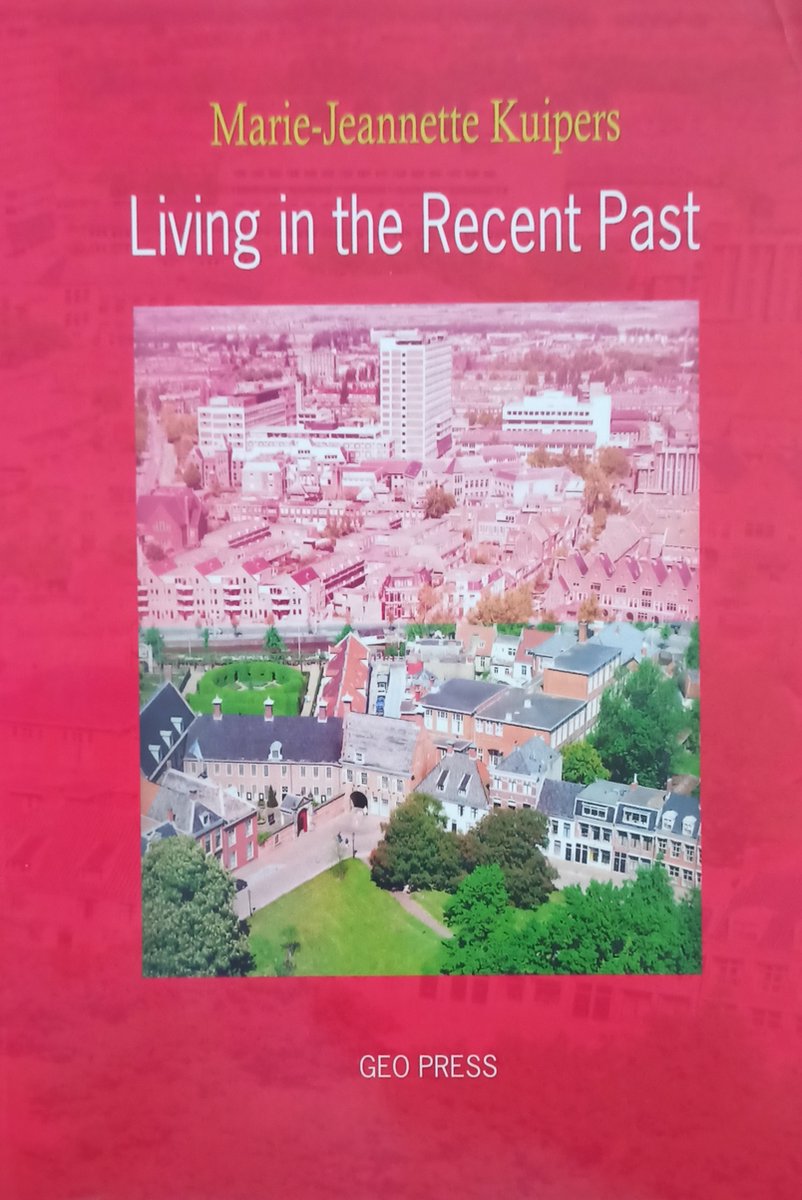
Marie-jeannette Kuipers - Living In The Recent Past
Het boek Living In The Recent Past van de auteur Marie-jeannette Kuipers is 1 maal gevonden, 0 maal nieuw en 1 maal tweedehands. "Living In The Recent Past" is tweedehands te koop vanaf € 50,00 bij Bol.com.
Bent u de schrijver van dit boek of weet u iets over deze auteur?
Omero.nl is druk bezig om informatie over auteurs toe te voegen. Neem contact met ons op via support@omero.nl om een auteursprofiel aan te maken met een foto, biografie, website adres en sociale media links.
Omero.nl is druk bezig om informatie over auteurs toe te voegen. Neem contact met ons op via support@omero.nl om een auteursprofiel aan te maken met een foto, biografie, website adres en sociale media links.
Tweedehands
We hebben 1 tweedehands advertentie gevonden

|
Aanbieder
Bol.com |
ISBN
9789071971730
Soort boek
Paperback In the Netherlands, the designation of more, and younger, national urban conservation areas (UCAs) and national monuments now and in the future will eventually lead to problems of success. The most important of which is financial, namely the increasing cost for present and future governments of large-scale maintenance and reconstruction, resulting from low profitable occupancy rates. This research attempts to establish whether the designation of younger UC As will lead to its own success problems, in particular financial problems in the sense that residents are unwilling or unable to pay the related costs. The designation process for younger national UC As is a complex one, and is subject to delay. Why did the government begin to inventorise, select and designate, younger national UCAs and monuments? How do the local authorities of medium-sized cities perceive the overall designation process, and the role of national, regional, and local authorities within that process? Surveys were carried out among the residents of three younger national UCAs in the Netherlands, The residents were asked to give their opinion of their residential district or dwelling. Do they regard it as historical, and is that important for them? The survey also established their life phase, type of dwelling, preferred residential location, preferred functional composition of the residential area, and the extent to which these factors influence their willingness to invest in the historicity of their residential district. All three UCAs have a relatively large amount of social rented housing managed by housing associations. Therefore, representatives of housing associations with property in the three younger national UCAs were also asked whether they regard the area or their property within it as historical, and whether it is important that the property is historical. <p> </p> <p> </p> <p> In the newspaper Dagblad van het Noorden, dated 25 Mai 2005, I read the headlines ‘Restoration dwellings in Bernoulliplein partly flopped’ and ‘We bought a dwelling and not a monument’, It is about the complex of dwellings designated as national monument located in the urban conservation arca Korrewegwijk, one of my case studies in this book. It is an interesting outcome with respect to the repeatedly returning questions *Whose heritage is it?’, and “Who is going to pay for it?’. It is about the restoration project Bernoulli-plus, in which 105 dwellings had to be restored in a collective way. <br /><br />The Groningen local authority had set aside grants of between € 3100 and € 3600 per dwelling. The residents were expected to invest ten thousands of Euros in the restoration. A part of the grants made available by the national government went in the calculation of the restoration costs. (Dagblad van het Noorden, 2004:9). <br /><br />Ultimately, only 20 home owners took part in the project. Now, their dwellings look like the way they looked in the 1920s. Reasons for the small participation are: many home owners had no money for the restoration, the condition of some buildings was disappointing, participation in a maintenance fund was compulsory. Some participants are disappointed because they fear that now the restoration only took place partly, the by the local authority predicted increase in value of their property will stay away and the collective maintenance through a special fund has become insecure. However, there are also participants that say not to have any regrets of the participation because they regard the Bernoulliplein as a ‘small pearl in the city’… <br /><br />… Now, it really is time to finish this story. However, this story, because [ hope to continue writing about and doing research on heritage in the future. However, Il cannot conclude without thanking a number of people that helped me on the way to this ultimate book. First, I would like to thank my supervisor Greg Ashworth who gave me the chance to write a thesis and publications in the field of heritage planning. 1 also would like to thank Henk Voogd for his commitment with my research. Henk, [ very much appreciate that l always could ask you questions if I got stuck on something. Thank you for all your helpful advice. Paul van Steen, thank you for giving me advice on introductory letters, questionnaires, reminders, and response. Jon Ubbink, thank you for your help with the statistics of my research in general and the random sample calculation in particular. The questionnaires would not have looked as nice without the help of Gert-Jan ten Kate for the lay-out and Theo Smit for the production, thank you both for that. <br /><br /> </p>
|
Prijs
€ 50,00 |
Bekijk boek |